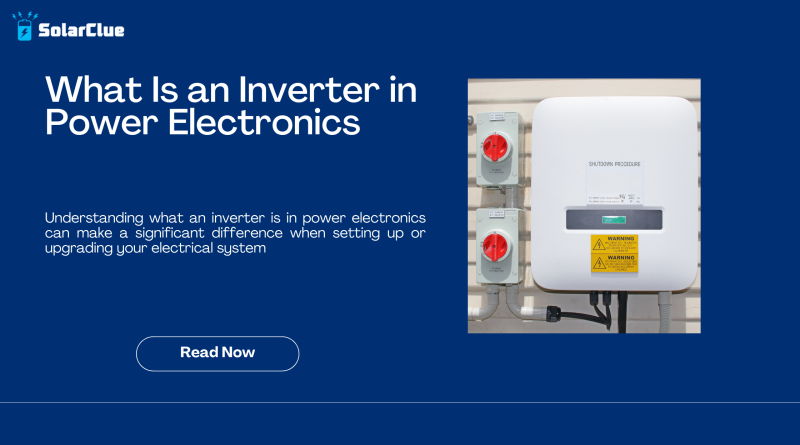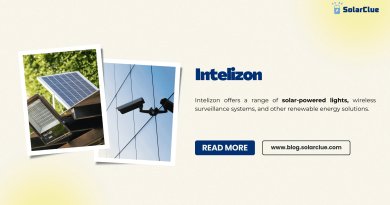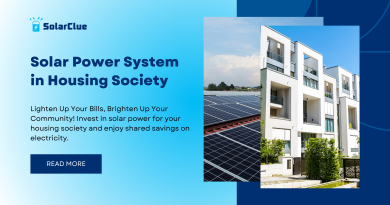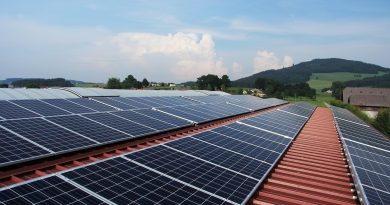What Is an Inverter in Power Electronics
If you’ve ever delved into the world of electronics or renewable energy, you might have come across the term “inverter.” It’s one of those technical terms that can sound a bit intimidating if you’re not familiar with it. So, what is an inverter in power electronics, and why is it such a crucial component in modern electrical systems?
Let’s break it down in simple terms and explore how this important device works and why it matters.
Table of Contents
What Is an Inverter?
In the world of power electronics, an inverter is a device that converts direct current (DC) into alternating current (AC). To put it simply, it changes the type of electricity so that it can be used by various electrical devices and systems.
Here’s a basic analogy: Imagine you have a special tool that only fits one type of plug, but your appliances use a different type. An inverter is like an adapter that allows you to use your tool with those appliances. In the same way, it allows the electricity generated by different sources (like solar panels or batteries) to be used by your home’s appliances, which typically run on AC power.
Why Do We Need Inverters?
To understand why inverters are necessary, it helps to know the difference between DC and AC power:
- Direct Current (DC): This type of electricity flows in one constant direction. It’s the kind of power you get from batteries or solar panels. It’s steady and consistent but not ideal for home appliances.
- Alternating Current (AC): This type of electricity alternates direction periodically. It’s the standard form of electricity supplied by power grids and used by most household appliances because it’s more efficient for long-distance transmission.
Why Convert DC to AC?
1.Appliance Compatibility: Most household appliances and devices are designed to run on AC power. Without an inverter, you wouldn’t be able to use the DC power from sources like solar panels or batteries in these devices.
2.Grid Compatibility: If you’re connected to the power grid, the inverter ensures that the DC power generated by your solar panels matches the AC power used by the grid, allowing you to feed excess power back into the grid safely.
3.Efficiency: Inverters are designed to convert DC to AC with minimal loss of energy. This means you get more usable power from your energy sources.
How Does an Inverter Work?
To get a clearer picture of how an inverter works, let’s break down the process:
1.Receiving DC Power: The inverter receives direct current (DC) electricity from a source, such as a solar panel or battery.
2.Conversion Process: Inside the inverter, electronic circuits convert the steady DC into fluctuating AC. This involves creating a signal that alternates direction, matching the requirements of AC power.
3.Output to Devices: The converted AC power is then sent out to your home’s electrical system. It powers your appliances and lights, which are designed to run on AC.
4.Monitoring and Control: Many modern inverters come with features that monitor energy production and system performance, helping ensure everything is running smoothly.
Key Features of Modern Inverters
Here’s a table summarizing some of the key features and benefits of modern inverters:
| Feature | Description |
|---|---|
| Efficiency | High conversion efficiency to minimize energy loss. |
| Monitoring | Real-time data on energy production and system performance. |
| Durability | Built to withstand various environmental conditions. |
| Grid Compatibility | Ensures the AC power matches grid standards for safe integration. |
| Advanced Control | Features like remote access and automated adjustments. |
Types of Inverters
There are several types of inverters, each suited to different applications:
1.String Inverters: These are used in solar power systems and convert the DC from a string of solar panels into AC. They’re commonly used in residential systems.
2.Microinverters: These are smaller inverters attached to individual solar panels. They convert DC to AC at the panel level, which can improve efficiency, especially in systems with shading issues.
3.Central Inverters: These are larger units used in commercial solar installations. They handle the conversion for large arrays of solar panels and are designed for high efficiency.
4.Hybrid Inverters: These can work with both solar panels and batteries, allowing for more flexibility and storage options in a power system.
Choosing the Right Inverter
Selecting the right inverter depends on several factors:
1.System Size: Ensure the inverter can handle the size of your solar panel system or battery bank.
2.Power Requirements: Choose an inverter that meets your home’s power needs. This includes considering peak power loads and average consumption.
3.Budget: Higher-quality inverters may have a higher initial cost but can offer better efficiency and features that save money over time.
4.Installation and Maintenance: Professional installation is recommended to ensure proper operation. Regular maintenance will help keep the inverter in good working condition.
Conclusion
Understanding what an inverter is in power electronics can make a significant difference when setting up or upgrading your electrical system. This device plays a vital role in converting DC power into AC power, making it usable for your home’s appliances and ensuring compatibility with the electrical grid.
Whether you’re installing solar panels or working with batteries, knowing how inverters work and their purpose can help you make informed decisions and ensure your energy system operates efficiently. So next time you hear about inverters, you’ll appreciate their role in keeping your power systems running smoothly and effectively.
Visit SolarClue® to see the best Solar Inverter. SolarClue® actively sells solar energy products at discounts of up to 50% on its online marketplace.
FAQ About Inverters
1. How long does an inverter typically last?
Most inverters have a lifespan of 5 to 10 years, depending on usage and maintenance. Regular checks and proper care can help extend their life.
2. Can I use any inverter with my solar panels?
Inverters are generally compatible with most solar panel systems, but it’s best to check the specifications to ensure compatibility.
3. What kind of maintenance does an inverter need?
Inverters require minimal maintenance. Regularly check for any signs of damage, keep them clean, and ensure they are functioning properly.
4. Can an inverter be repaired if it breaks down?
Yes, many inverters can be repaired. However, depending on the extent of the damage and the age of the inverter, it might sometimes be more cost-effective to replace it.
5. How do I monitor the performance of my inverter?
If your inverter has a monitoring system, you can use it to check real-time data on energy production and system performance. Some models offer online portals or mobile apps for easy access.




